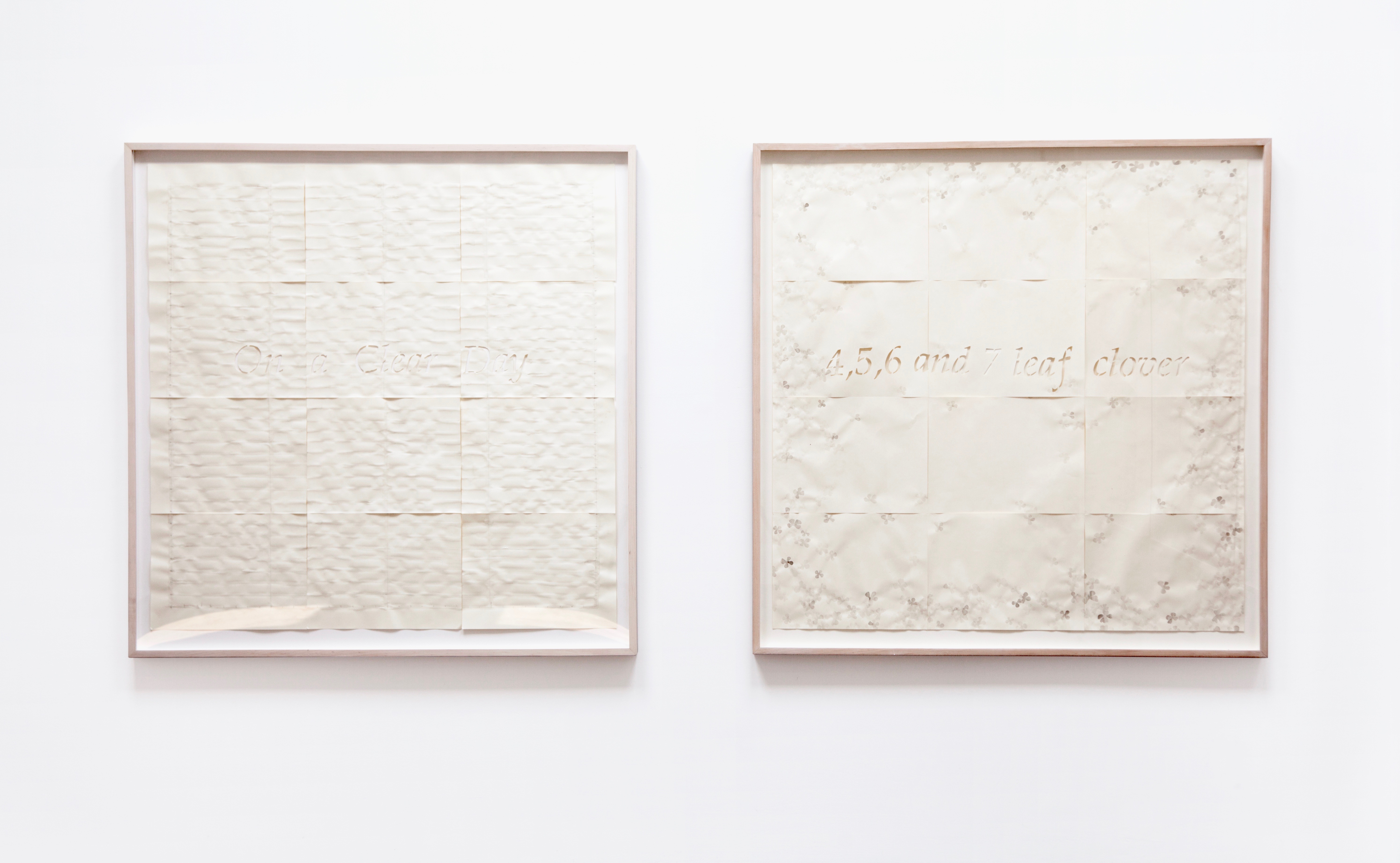Simultaneities: March 29 - May 4, 2019, Christie Contemporary, Toronto







Simultaneities
An outward looking focus on the work of other artists and cultural producers is of profound significance to Bolliger’s practice. Untitled (2009 – present) comprises a series of large-scaled works on paper that cite specific artworks by Silvia Baechli, Tacita Dean, Eva Hesse, Bethan Huws, Agnes Martin, Doris Salcedo and Martha Townsend. Each follows a distinct format: the title of the referenced work is inscribed in the centre of a grid formed by sheets of paper on which fragments present in the original works are invoked in ink washes. This basic description however, does not convey the subtlety of the arrangements, nor the fragile quality of the ink drawings. Untitled ( Tacita ), refers to Dean’s installation, Four, Five, Six, and Seven Leaf Clover ( 1972 - ) in which she carefully placed clover leaves, grouped by number of leaves, in four large vitrines. In Bolliger’s interpretation, delicate ink washes of clover leaves are concentrated around the edges of the paper grid, leaving an opening at the centre. Tentative lines are generated over the surface of Untitled ( Silvia ),which refers to the practice of Swiss artist Silvia Baechli, defined by her use of sparse and poetic line-drawings. The ephemerality and interior reflection that characterizes much of Baechli’s drawings find a counterpart in Bolliger’s visual explorations. Curator Catherine De Zegher describes the act of creating a line as an “indicator of a cognitive process,” one that focuses on a “kinesthetic practice of tension.” This sensation of holding a line in delicate balance, physically and intellectually, can be found in both artists’ works. Agnes Martin has referred to the non-representational line as a “plane of attention and awareness,” qualities that extend across Bolliger’s oeuvre and also find affinities with Baechli’s practice.
The freehand nature of the drawn line stands in intriguing contrast to the clean paper edges of the grid in the Untitled series, creating a visual contradiction. The grid speaks to a formal construct, discussed by theorist Rosalind Krauss as an emblem of modernity. Its use in the Untitled series creates a sense of formal continuity from one work to another, one softened into something ephemeral through the fragile drawings that spread across its pages. Over time the grid has been transformed into web-like or net-like configurations, allusions to evolving structures mirroring social and technological developments in a state of flux.
The act of highlighting these important practices helps to underscore their inclusion in an art discourse. The act of giving a work the designation “untitled” or “not titled” with the clear intention of bracketing out external references and simultaneously inscribing a title within the work, a seeming contradiction, invokes an entire history of titling practices. The use of the first name of the artists whose work is being referenced brings into focus the distinction between a personal, private and public acknowledgement of the artist persona. Bolliger’s approach, through juxtaposition, creates a sense of contemporaneity and reciprocity resulting in a dynamic which is charged and generates a new reading that focuses on change and holds the works in a continuous state of consideration and reflection.
- Shannon Anderson